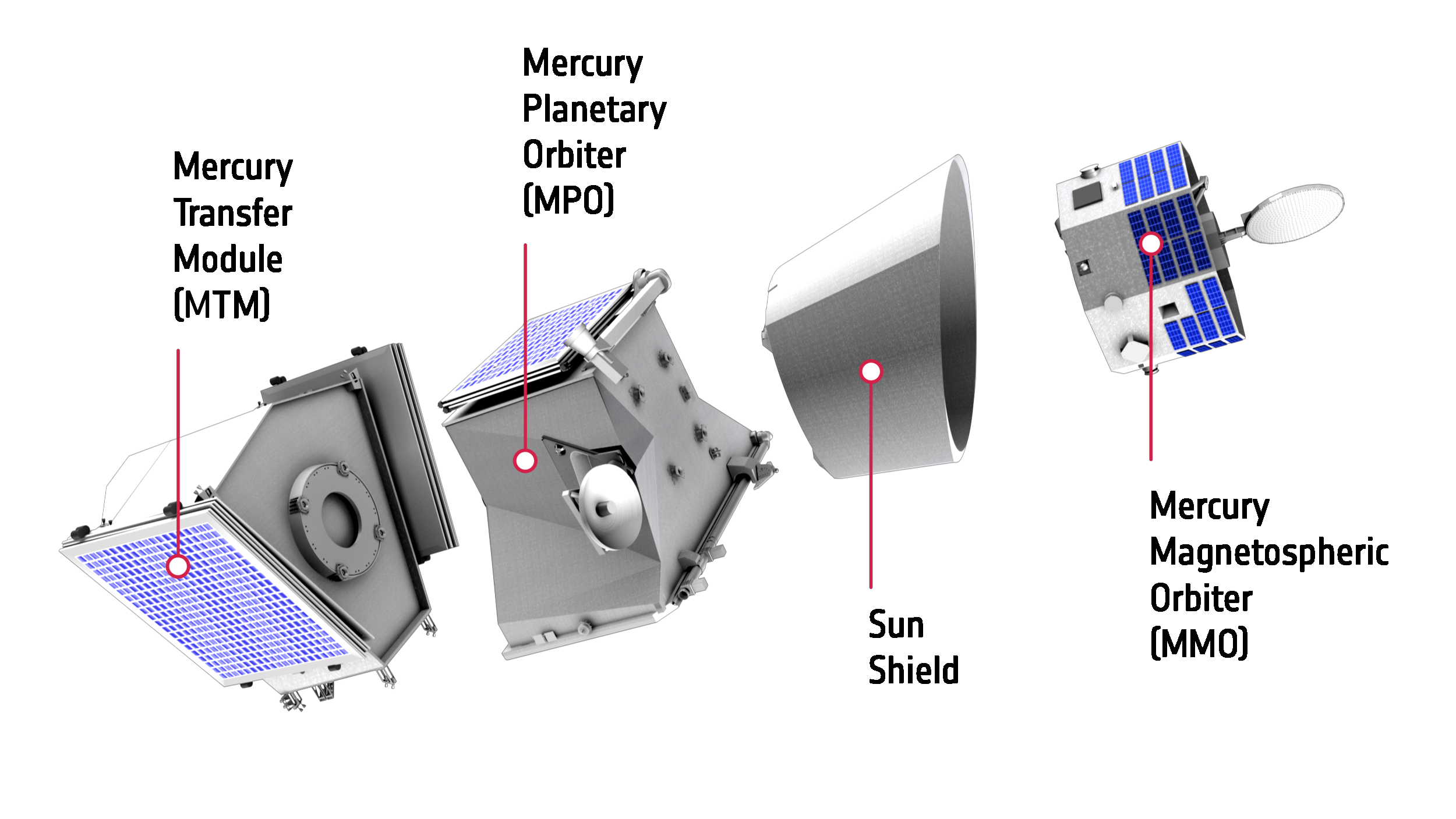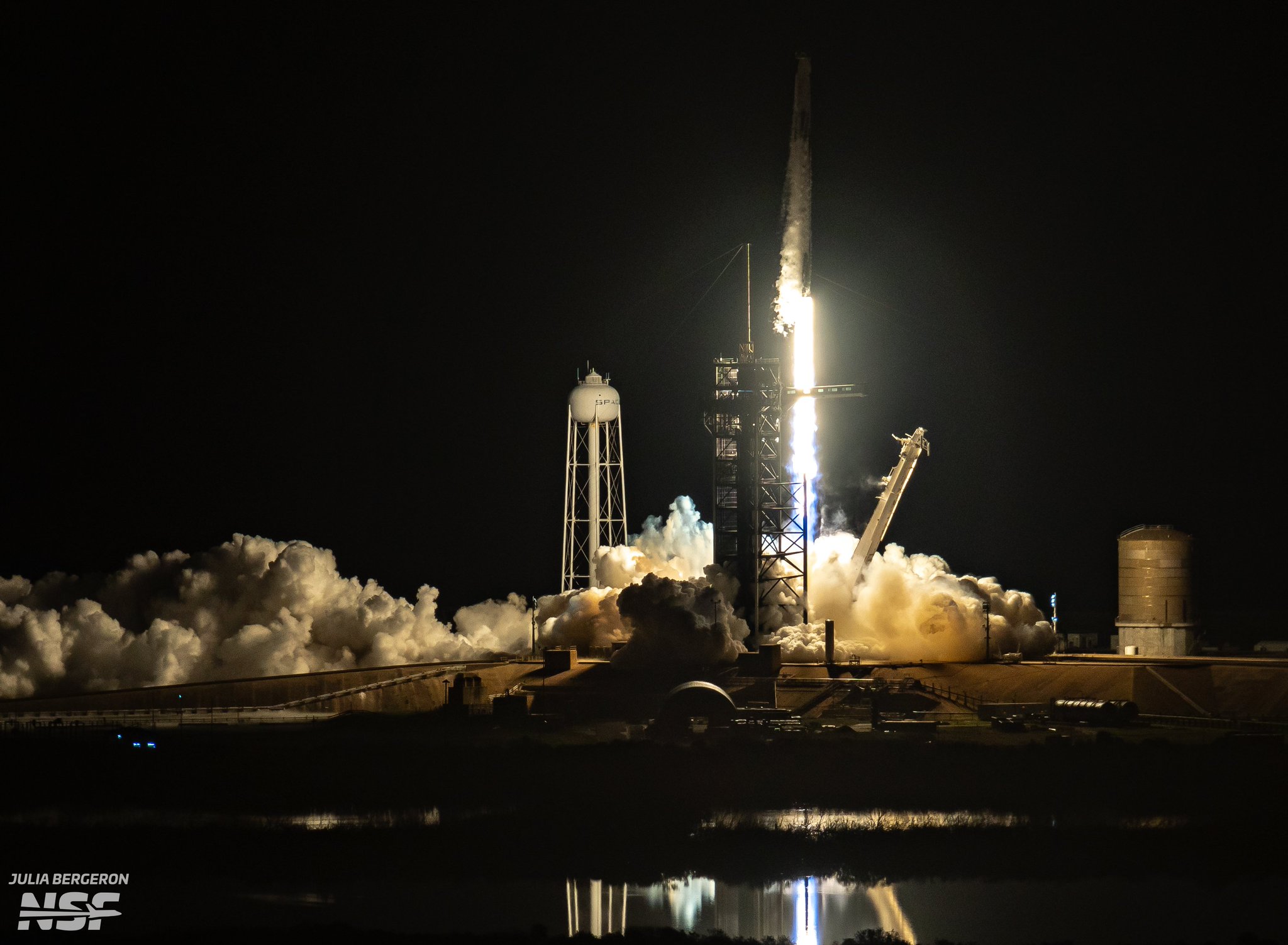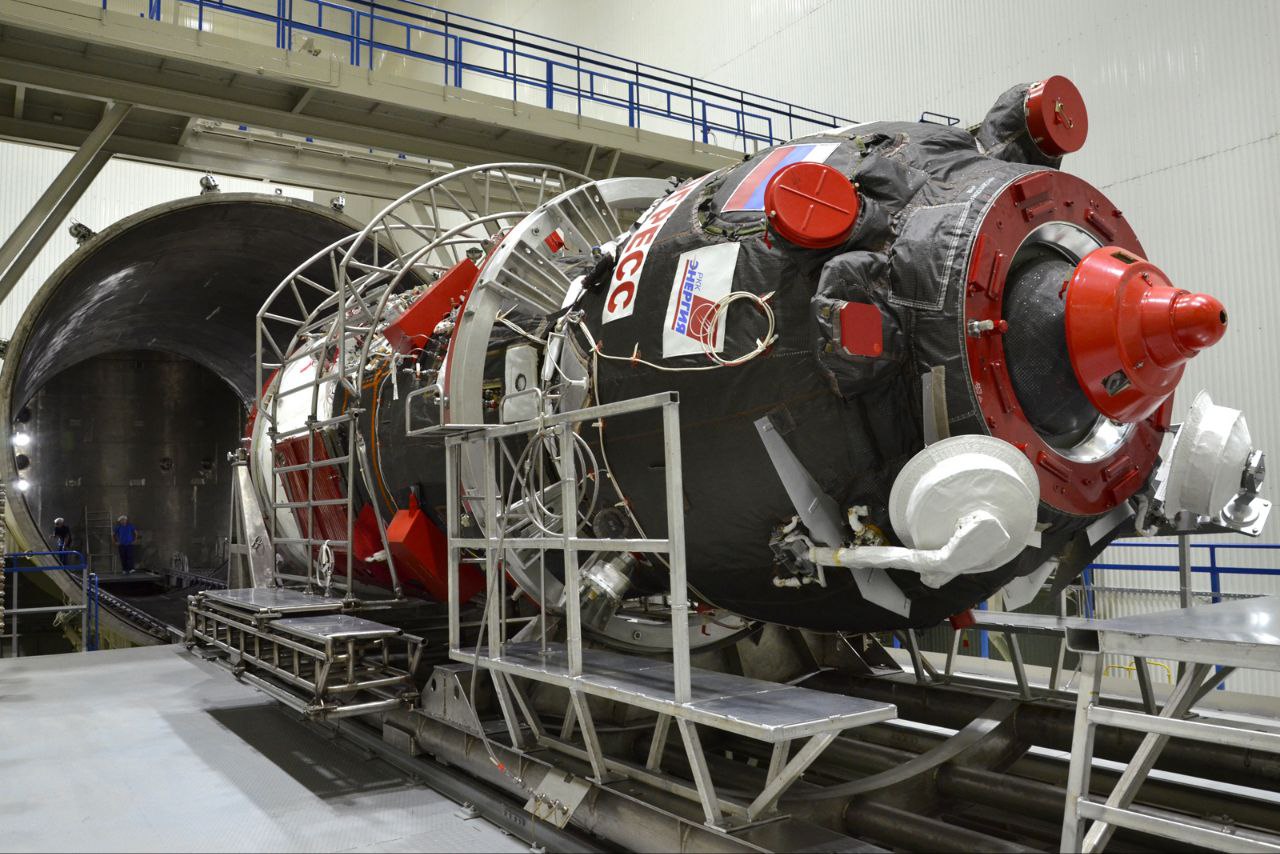In June 2023, the joint European Space Agency (ESA) and Japanese Aerospace Exploration Agency (JAXA) BepiColombo mission performed a flyby of its target planet — Mercury. During the flyby, the spacecraft experienced a variety of phenomena mainly caused by the planet’s magnetic field. BepiColombo measured these phenomena, providing scientists with a preview of Mercury’s magnetic field and its unique features, which BepiColombo is expected to investigate in-depth when it enters orbit around Mercury in November 2026.
While scientists have known of Mercury’s magnetic field for decades, it is approximately 100 times weaker at the planet’s surface than Earth’s magnetic field, and scientists still have many questions regarding its intensity and interactions. Mercury’s magnetic field creates a “bubble” around the planet called the magnetosphere, and given Mercury’s proximity to the Sun, this magnetosphere is constantly bombarded with energized particles that are ejected from the surface of the Sun.
When BepiColombo arrives at Mercury, the spacecraft will separate into two separate spacecraft — the Mercury Planet Orbiter (MPO), which is led by ESA, and the Mercury Magnetospheric Orbiter (MMO), which JAXA leads — and two separate orbits. However, during the flybys BepiColombo performs while en route to Mercury, the two spacecraft are still stacked, meaning both spacecraft’s instruments can observe parts of Mercury they won’t be able to when in their respective orbits. What’s more, some of BepiColombo’s flybys occur in areas that are not directly accessible from orbit.

The BepiColombo probe, featuring the MPO, MMO, and MTM modules. (Credit: ESA)
Using BepiColombo’s Mercury Plasma Particle Experiment (MPPE) suite of instruments, a team of scientists led by Lina Hadid, a scientist at the Laboratoire de Physique des Plasmas at Paris Observatory and lead co-investigator of MPPE, built a snapshot of Mercury’s magnetosphere. Hadid et al. were able to collect the required data in approximately 30 minutes during BepiColombo’s June 19, 2023 flyby, which was the spacecraft’s third of six total Mercury flybys.
“These flybys are fast; we crossed Mercury’s magnetosphere in about 30 minutes, moving from dusk to dawn and at a closest approach of just 235 km above the planet’s surface. We sampled the type of particles, how hot they are, and how they move, enabling us to clearly plot the magnetic landscape during this brief period,” Hadid explained.
Hadid et al. combined the MPPE measurements with computer models to determine the origin of the magnetosphere particles detected by BepiColombo during the flyby. Knowing the origin of these articles allowed the team to accurately sketch out Mercury’s magnetospheres and its various features.
“We saw expected structures like the ‘shock’ boundary between the free-flowing solar wind and the magnetosphere, and we also passed through the ‘horns’ flanking the plasma sheet, a region of hotter, denser electrically charged gas that streams out like a tail in the direction away from the Sun. But we also had some surprises.”
“We detected a so-called low-latitude boundary layer defined by a region of turbulent plasma at the edge of the magnetosphere, and here we observed particles with a much wider range of energies than we’ve ever seen before at Mercury, in large thanks to the sensitivity of the Mass Spectrum Analyser designed especially for Mercury’s complex environment. BepiColombo will be able to determine the ion composition of Mercury’s magnetosphere in greater detail than ever,” said co-author and former BepiColombo instrument lead Dominique Delcourt.

The different features present within Mercury’s magnetosphere during BepiColombo’s June 2023 flyby. (Credit: ESA)
In addition to these phenomena, Hadid et al. also noted the existence of a ring current or an electric current carried by charged particles that are trapped within a planet’s magnetosphere, within a few hundred kilometers of Mercury’s surface. Scientists aren’t entirely sure how charged particles are being trapped within a few hundred kilometers of Mercury, especially when the planet’s magnetosphere is pushed against its surface. Earth has a ring current present within its magnetosphere, however, it extends tens of thousands of kilometers from the planet’s surface — much farther than Mercury’s ring current.
“We also observed energetic hot ions near the equatorial plane and at low latitude trapped in the magnetosphere, and we think the only way to explain that is by a ring current, either a partial or complete ring, but this is an area that is much debated,” said Hadid.
Hadid et al.’s data allowed BepiColombo teams to not only observe the planet’s magnetosphere but also how the spacecraft interacted with the magnetosphere and the surrounding space plasma. For example, when BepiColombo is being heated by the Sun, the spacecraft can’t detect colder, heavier ions due to the spacecraft being electrically charged, which repels the ions. However, when the spacecraft is not being heated by the Sun and is in the shadow of Mercury, a sea of cold plasma ions covers the spacecraft and becomes visible due to the spacecraft’s charging being different. During the June 2023 flyby, BepiColombo detected ions of oxygen, sodium, and potassium. These ions were likely sent flying from Mercury’s surface due to the planet’s interactions with solar wind or micrometeorite strikes on the surface.
“It’s like we’re suddenly seeing the surface composition ‘exploded’ in 3D through the planet’s very thin atmosphere, known as its exosphere. It’s really exciting to start seeing the link between the planet’s surface and the plasma environment,” Delcourt explained.

Simulated view of Mercury’s magnetosphere. (Credit: Willi Exner – ESA & TU Braunschweig)
Hadid et al.’s results highlight the importance of the BepiColombo mission and its ability to characterize the closest planet to the Sun. In addition to providing scientists with vast insights into planetary magnetospheres and the science behind them, BepiColombo will reveal more about how Mercury formed and evolved.
“The observations emphasize the need for the two orbiters and their complementary instruments to tell us the full story and build up a complete picture of how the magnetic and plasma environment changes over time and in space,” said ESA BepiColombo project scientist Geraint Jones.
Since the June 2023 flyby, BepiColombo has completed its fourth flyby of Mercury, and the mission’s scientists have already begun analyzing the data collected by the spacecraft during the flyby. BepiColombo’s final two Mercury flybys are scheduled for Dec. 1, 2024, and Jan. 8, 2025.
(Lead image: BepiColombo and its trajectory through Mercury’s magnetosphere. Credit: ESA)



